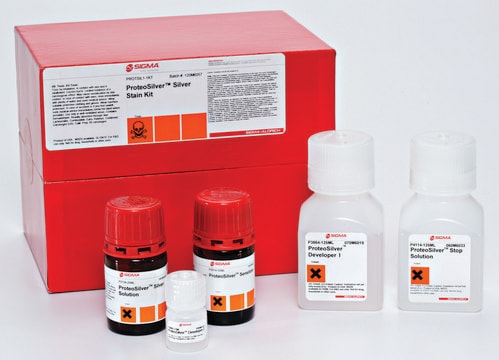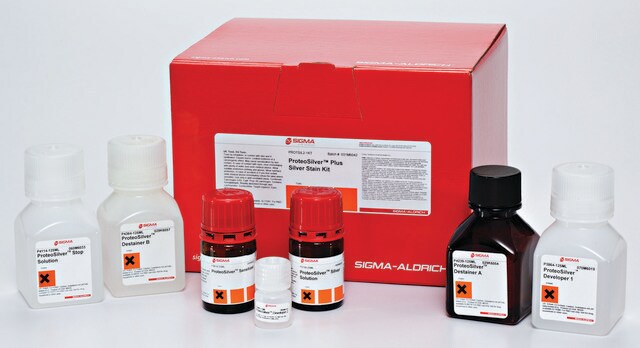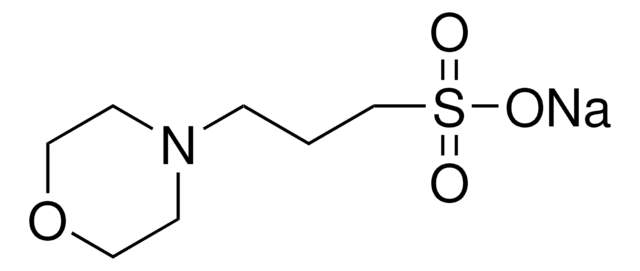S4942
SYPRO® Ruby Protein Gel Stain
Sinónimos:
SYPRO® dye, protein gel stain
About This Item
Productos recomendados
caducidad
≥6 mo. (when stored at room temperature and protected from light)
Nivel de calidad
técnicas
protein staining: suitable
fluorescencia
λex 280,450 nm; λem 610 nm
Descripción general
- uses a simple staining protocol, with no possibility of overstaining
- delivers a linear quantitation range of over three orders of magnitude
- shows less protein-to-protein variability
- stains glycoproteins, lipoproteins, calcium-binding proteins, fibrillar proteins, and other difficult-to-stain proteins
- will not stain extraneous nucleic acids
- does not interfere with subsequent analysis of proteins by Edman-based sequencing or mass spectrometry
Aplicación
Precaución
Información legal
Código de clase de almacenamiento
10 - Combustible liquids
Clase de riesgo para el agua (WGK)
WGK 3
Punto de inflamabilidad (°F)
Not applicable
Punto de inflamabilidad (°C)
Not applicable
Equipo de protección personal
Eyeshields, Gloves, multi-purpose combination respirator cartridge (US)
Certificados de análisis (COA)
Busque Certificados de análisis (COA) introduciendo el número de lote del producto. Los números de lote se encuentran en la etiqueta del producto después de las palabras «Lot» o «Batch»
¿Ya tiene este producto?
Encuentre la documentación para los productos que ha comprado recientemente en la Biblioteca de documentos.
Artículos
To meet the great diversity of protein analysis needs, Sigma offers a wide selection of protein visualization (staining) reagents. EZBlue™ and ProteoSilver™, designed specifically for proteomics, also perform impressively in traditional PAGE formats.
Protocolos
Introduction to PAGE. Learn about SDS-PAGE background and protocol for the separation of proteins based on size in a poly-acrylamide gel.
Nuestro equipo de científicos tiene experiencia en todas las áreas de investigación: Ciencias de la vida, Ciencia de los materiales, Síntesis química, Cromatografía, Analítica y muchas otras.
Póngase en contacto con el Servicio técnico







